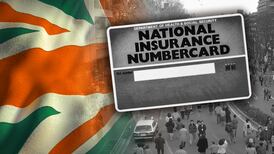In a move to finally declutter our pockets and wallets, the Central Bank last week announced that next Wednesday will be Rounding Day – retailers will be voluntarily rounding change to the nearest five cent and we can slowly divest our piggy banks of those frankly irritating little coins.
The news was greeted with headlines around the world suggesting we were suddenly ditching coppers (“Another country is dumping its small change”, went the CNBC headline), but in fact this is more like a pre-retirement transition period, the coins moving down to a three- day week while remaining legal tender and in circulation.
According to Ronnie O’Toole of the Central Bank, the goal is to reduce the number of one and two cent coins in use by about 85-90 per cent over the next few years.
The logic from the Central Bank is compelling and borne out by a trial in Wexford in 2013, which left everyone satisfied at the decline in shrapnel in their pockets and tills.
"Ireland has produced 2.5 billion one cent and two cent coins since the introduction of the euro, enough to go around the island of Ireland seven times, or stacked on top of each other 4,000km into space," said a spokesman, vividly painting a picture of the astonishing waste the small coins represent.
But O’Toole doesn’t expect that space-tickling tower of small coins to suddenly return to the Central Bank once rounding begins. “The experience in other countries is that they don’t come back in huge numbers – they’ve gone into a black hole a long time ago,” he says.
Scrap metal
Those that do will be disposed of in the usual way, destroyed and sold as scrap metal or sold to other countries that still use them.
A key problem with the coins is that on aggregate they cost more to mint than their face value, because a one cent coin costs 1.65 cent to produce.
Multiply that over the 2,454,465,931 small coppers that have been issued here since the start of the euro, with a total face value of €37 million, and you’ve got, well, a lot of money wasted in jars, couches, drawers, pint glasses and wherever else people leave them.
In the world of coins and currency, that discrepancy is known as seigniorage – it’s a complex business, but basically, while the ECB can make a hefty positive seigniorage by printing €100 notes, for instance, the cumulative negative seigniorage of making loads of coins that nobody wants or uses is a significant drain.
It's like running a persistent anti-stimulus programme, just to be irritating. Which is why six other euro zone countries do without the little guys, and Finland never really introduced them in the first place.
And if any part of you feels a pang of regret at the end of the small-denomination coins, consider the fact that if you see a one cent coin on the ground, you need to scoop that copper up and have it in your pocket in under four seconds for it to pay better than the minimum wage . . . which might not sound quite so bad, until you factor in how awkward it can be to spend the thing.











